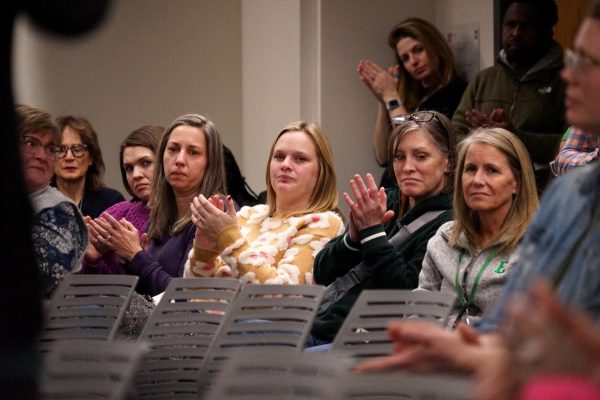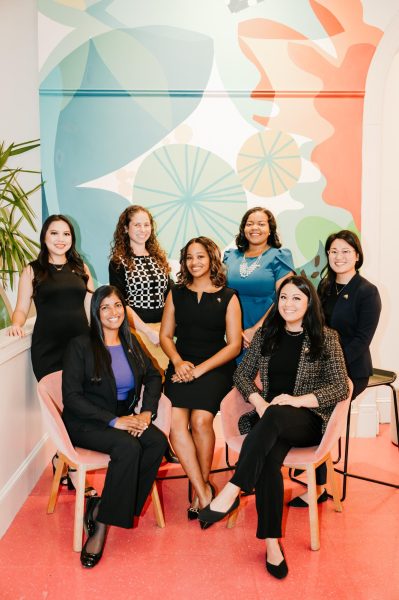Minding the gap: disparities in educational achievement persist in Minnesota
June 2, 2021
This article was originally published in The Sun Current.
*Editor’s note: The names Jimina, Fatima, and Ahmed, are used in this story as pseudonyms for interviewees who preferred to stay anonymous so that they could comfortably share their stories.
When Jimina’s son, Ahmed, fell behind on grade-level reading standards at his elementary school, she wasn’t aware of the problem until she met with his teacher at conferences in October of the school year. For Jimina, this news came as a shock.
“It would help if I knew earlier,” she said. “If my kid is behind the whole class, you know, instead of just waiting for the meeting and say(ing) this is happening, it’s better to say, ‘Hey, I noticed this, can you help him a little bit at home?’”
In Ahmed’s case, he was soon enrolled in the school’s English Language Learners Program, or ESL, to receive additional support in catching up with his peers. But in Jimina’s eyes, the program presented its own set of challenges—ones she found were hindering Ahmed’s learning.
“To me, it didn’t seem like he was getting the help he needed (in the program),” Jimina said. Being a part of ESL meant Ahmed had to miss one to two hours a day from other core classes, such as Math or Science.
Ahmed wasn’t meeting grade-level standards, and ESL didn’t seem to be the answer to helping him catch up to his peers. Ahmed isn’t alone: families of kids across the district affected by the achievement gap—whether they are in ESL or not— are struggling to get the right answers. The achievement gap is a culmination of various factors, and similarly, narrowing the gap requires all these factors to be taken into consideration: linguistic barriers in connecting with families, implicit bias that may be affecting their performance in the classroom, and understanding the student’s background, to name a few. Minnesota has one of the worst achievement gaps in the country, and Edina is just one of school districts across the state seeking to narrow it.
Minnesota has one of the worst achievement gaps in the country, and Edina is just one of school districts across the state seeking to narrow it.
Uli Rodriguez, the district Multilingual English Learner Coordinator, mentioned how missing a few hours of classes due to ESL may actually be benefiting students. “There are some students and families who think that when they are pulled out to receive English language services they are missing out from other classes,” he said.
“What the research shows us is that students who are not proficient in English benefit from being pulled out to receive academic English instruction. If a student is not proficient in English, all the subjects are going to be hard. We help our students to improve their academic English so that they can understand their classes, complete their homework, pass their classes, and graduate from high school.”
Jimina’s concerns are not only focused on Ahmed missing time from his other classes, but also his learning within the program itself. “Another thing I noticed in the ESL program is that they’re more focused on the kids’ background (rather) than helping them achieve,” Jimina said.
Jimina’s family is Somali, and although they are neither refugees nor immigrants, she feels like there’s an unconscious bias that “(Ahmed’s) English is not good enough,” despite the fact that all of her children only speak English at home. Because of this, she felt the program ostracized her son from his white peers.
However, Rodriguez mentioned how “[he’s] learned that most students enjoy being part of these classes because they feel they’re part of a supportive community.” ESL programs can be recommended but are not mandatory for students. “If a family feels that these services are not a good fit for their child, they can decline services. However, most of the students and families we work with are in the program because they feel they need it and it’s a great support,” Rodriguez said.
The numbers
Still, Jimina’s narrative is not an outlier; families of color across the district have students affected by the achievement gap. The achievement gap is the gap in standardized testing scores and high school graduation rates between white students and students of color. It’s a prevalent problem in Minnesota, which a 2019 report from the Federal Reserve Bank of Minneapolis finds has one of the highest achievement gaps in education.
According to the Minnesota Department of Education, Minnesota’s overall graduation rate in 2019 for white students was about 89%, compared to 70% for African American and Hispanic students, and 50.8% for American Indian students. When considering the MCA testing results over the last five years, anywhere from 19-22% of all students in Edina Public Schools fall into the “not meeting grade-level standards” category. When we consider the demographic make-up of this group over the past several years, in any given year, 12-16% are Asian, 48-54.5% are Black, 35-46% are Hispanic, and 19-20% are White.
EPS Data by Dedeepya Guthikonda
In that break-down, Edina’s achievement gap is similar to the state’s, “but I would say Edina is struggling to close it just like everybody else,” said Donna Roper, Director of Research and Evaluation for Edina Public Schools. “You would find that we have a persistent achievement gap that can be seen in all of our standardized measures.”
According to the Edina Public Schools World’s Best Workforce Achievement & Integration Report, the district did not achieve its annual goal of a three percentage point increase in Multilingual English Learners graduation rates, and was unable to report its progress in reducing the performance difference between students in the free- and reduced-price lunch program—a reference point commonly used to assess families’ financial resources—and their counterparts, because the MCAs were not administered in 2020.
Student performance on The Minnesota Comprehensive Assessments (MCAs) is a common method of measuring the achievement gap, since the MCA is administered to all eligible public school students with only a few exceptions. MCA testing will be taking place in the district starting in May throughout the end of the school year.
According to data released in 2018 by the Minnesota Department of Education, the achievement gap between FRL (Free and Reduced Lunch) and non-FRL student groups was widened by 2.8% in the Math MCAs and 1.4% in the Reading MCAs. However, in 2019, the district reported that MCA scores increased across all student groups, “significantly reducing the achievement gap.”
Roper mentioned that certain factors have persistently impacted the achievement gap. Some of those factors include socioeconomic status, whether students are native English speakers, and whether they are part of a special ed program. “We also know that while those factors explain part of the gap, they don’t explain all of it,” Roper said. “We also know that policies, practices and traditions don’t change easily, but as we see how the world is changing, and if the goal is to ensure a more equitable educational experience, these systemic pieces will also need to evolve.”
Deeper than the data
The persistent achievement gap faced by Edina Public Schools and a multitude of other districts is about more than just statistics.
Donna Roper, Director of Research and Evaluation for Edina Public Schools, knows this well. So what do these other factors look like?
Roper finds that qualitative measures, such as what kind of family and community support students have as well as their teacher and school support, play an important role in understanding the achievement gap. In fact, the State of Minnesota conducts a Minnesota student survey every three years which collects data from students of various grade levels and from different racial and socioeconomic groups.
While Roper said, “What the survey suggests, is that most kids are committed to learning, regardless of income, race, where they come from, and many have a really, you know, good positive identity,” the 2019 data from the Minnesota Student Survey touches on the prevalent disparities that exist between these different groups of students. For example, 51% of all students reported they have obtained mostly As for school grades, compared with 28% of FRL students. However, the majority of students across all racial groups indicated having a commitment to learning and positive out-of-school experiences, along with strong teacher and family support.
Working with multilingual families, who are often affected by the achievement gap, is an important aspect of tackling these disparities, according to Roper. “We do have a task force that’s starting to reach out and do some work with our families, and the district has had affinity groups throughout the years where they have brought together families from the Somali community, families from the Latinx community, and so forth,” Roper said. “By listening to what our families need, and establishing trusting relationships, we will be in a position to respond to needs in the best way possible for our students.”
The district’s attempts to connect with multilingual families of students also extends beyond these delegated task forces to a more personal level.
Greg Banko, a Special Education teacher at South View who also serves on the school’s Racial Equity Task Force, describes informal ways in which the district has tried to connect with families. Banko, along with other team members from South View, sought out places in the community where a number of multilingual families live.
“We looked at multiunit housing,” Banko said. “So there are places like Parklawn and Cedars of Edina, Gallagher Avenue, that we realize we have a lot of East Indian families. Can we use our cultural liaison to reach out to those families, and say hey, we’ll come to you to bridge the gap of building a connection, if in fact logistically it’s very difficult for you to get to the school?”
This initial idea merged into the concept of family nights at these respective apartments. “We’ll have food, we’ll have a presentation. We’ll have key people there: social workers, students services, counselors,” Banko said.
While one goal for these events is to educate families who may not be accustomed to the school system and make them aware of available resources, Banko mentioned they invite everybody in the housing complex. Each event consists of a Q&A session with families “to find out what’s going well for you and what’s not working well. What are the concerns you have for your children? Do you know how to access resources? Do you know who the key players are?” Banko explained.
Other efforts include helping families navigate financial aid scholarships and connecting them with representatives from Community Ed to help enroll students in extracurricular programs.
However, these events are not affiliated with the school or district; they’re an initiative that staff from South View, along with Banko, coordinate themselves. “We just did it because we knew it was important for our job and you know, we’re professionals,” Banko said, mentioning they did not get paid for conducting these events.
According to Jimina, there’s a need for this kind of direct, personal connection, especially with families of color. She recognizes the difference in attending Edina versus neighboring schools; for example, her kids used to attend Richfield Public Schools, where there is greater diversity.
According to MDE, about 61% of students enrolled in Richfield Public Schools are students of color, 46% of those enrolled in Bloomington Public Schools are students of color, and 40% of Eden Prairie Public Schools enrollees are students of color. About 24% of enrollees in Edina Public Schools are students of color.
MN Data by Dedeepya Guthikonda
Nijima mentioned that she avoided enrolling her students in Edina-affiliated extracurricular sports programs, preferring the neighboring YMCA instead.
It’s these concerns that Banko hopes to address by facilitating family nights. “When people see that you actually go the extra mile, and then you care about their kids, I think it has a ripple effect and has a long-lasting positive effect and, you know, relationship that you’re cultivating between the school and the community,” he said.
Unconscious bias training is one measure the district is taking to make sure teachers are aware of the differences between their perceptions of students’ backgrounds and the reality. “We’re trying to identify those supports that kids need, whether it’s tutoring or additional time, or just a different environment,” Roper said.
Unconscious bias training is one measure the district is taking to make sure teachers are aware of the differences between their perceptions of students’ backgrounds and the reality.
Fatima, a Black mother of three in Edina Schools, can speak to examples of inherent bias her students have experienced in school. “My kids were born here, but they’re Somali and they’re Black. They’re Muslim. I feel like there are times when a minor thing, like a little problem that could have been solved in school, has been overlooked or exploded,” she said.
Other examples of implicit bias—defined as a type of subconscious bias towards certain social or racial groups — in the classroom are not as obvious. For example, “overlooking or downplaying the significance of getting a name right” is a microaggression that appears in the classroom and can severely undermine learning, Rita Kohli, assistant professor of education at the University of California at Riverside, wrote in a study titled, “Teachers, Please Learn Our Names!: Racial Microaggressions and the K-12 Classrooms.” The study, published in 2012, found that failure to pronounce a name correctly affects the social well-being of a student, which is linked to learning. Racial equity training curriculum is currently implemented for all teachers and staff within the district.
The district is taking measures to target the achievement gap. This was evident in a significant closure of the gap in the high school science Minnesota Comprehensive Assessments in 2019, when “Black or African American” and “Hispanic or Latino” students saw the greatest gains, improving proficiency rates by 45 and 29 percentage points, respectively. Overall, Edina High School students’ proficiency rate increased from about 70% to 93%.” While this closure was a culmination of several efforts, such as giving students the option to make the standardized assessment as part of their final class grade, it was also a result of other qualitative factors.
“They really deserve a lot of credit for their alignment work, in terms of the instruction, to their ability to implement some of those culturally responsive teaching and learning strategies, where they incorporated student voice, and actually got the students, maybe, to be a little more intrinsically motivated in the work,” Roper said.
The COVID-19 pandemic, unsurprisingly, has also exacerbated learning disparities. “Maybe it’s the distance learning,” Fatima said. “When [my daughter] was in school in Creek Valley, she had two ESL teachers. And it seemed like it was better. She had a better understanding of things, but I feel like right now, it’s not progressing at all. It seems like right now, [my daughter] is at the same level [in her ESL class].”
After witnessing Ahmed’s lack of progress in the program, Jimina decided to take his learning into her own hands by enrolling him in Kumon, an after-school math and reading learning center. By attending this program twice a week after school, Ahmed was able to catch up to his peers and grade-level standards, eventually exiting ESL.
But Jimina recognized that not all families could afford to send their children to Kumon. Thus, she calls for the school to claim more accountability.
“What needs to happen is that (the school) needs to communicate with the parents and say, ‘Okay, this is where (your student) is lacking, these are their weaknesses,” and push to do more than taking one hour away from the (students’) regular classes for ESL,” she said.
“They need to put effort into helping the kids in ESL, you know, without making them feel less than others.”











